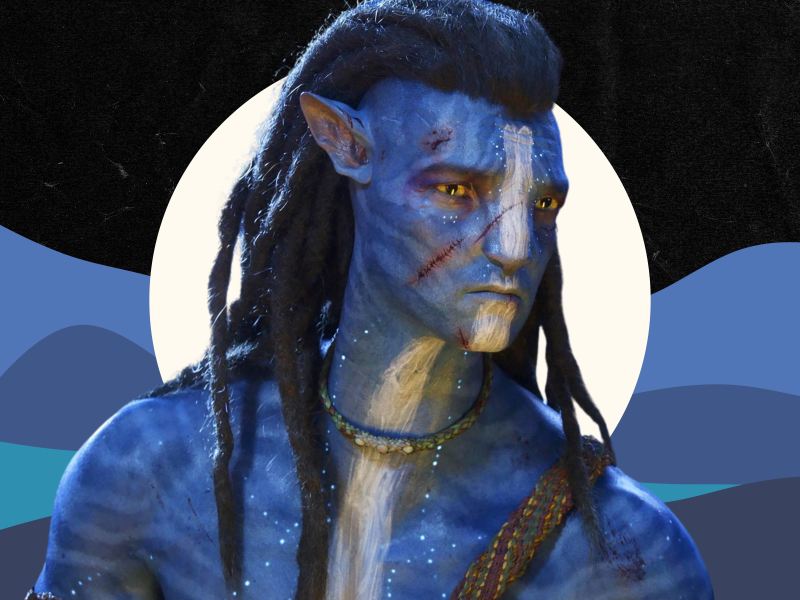Is it just me, or have 3D glasses for movies joined the likes of Britney Spears songs and neighborhood ice cream trucks? I don’t remember the last time I put a pair on since 13 years ago… to watch the original “Avatar” (2009).
But in 2022, I find myself entering the marvelous world of blue bipeds yet again, in director James Cameron’s latest coup de maître. “Avatar: The Way of Water” preserves the threads of beauty, environmentalism and technological swankiness that the original revolutionized. With digitally rendered tropical flowers, bioluminescent organisms and rugged peaks and valleys, all that was left for perfect cinematic immersion was a David Attenborough voiceover. In other ways, however, the film is lacking — it carries an overly traditional storyline and questionable tropes. Cameron’s priorities are clear in this innovative passion project — prioritizing cinematic visuals over the plot.
Like many other seven-year-olds of our generation, I was enthralled by the first “Avatar.” The concepts of self-discovery and critique of colonialism amidst an alien ecosystem was novel to me. There was comedy, romance and there was action made real by the viscerality of everything coming out of a screen.
But I am no longer seven and “The Way of Water” rehashes many of the same ideas. Jake Sully, the paraplegic Marine who was sent outside the solar system to Pandora, is now leader of a clan of Na’vi. Their people are 10-foot-tall creatures with mostly human features, save for their blue skin, cobalt skin patterns and the ability to connect with the flying Ikran.
In the sequel, Jake now raises a family with his star-crossed lover, Neytiri. Their children include Neteyam, the oldest son yearning to follow in his father’s footsteps as a warrior, Lo’ak (the troublemaker), Tuk (mischievous daughter), Kiri (an adopted daughter and natural in the water) and Spider (a human boy born from enemy Colonel Quaritch). Aside from the fact that my brain could not, for the life of me, remember most of their full names, I enjoyed these family dynamics.
Each character is portrayed with a distinctive personality and a focussed subplot. Kiri, for instance, is initially distraught when her family is forced to flee from their home with the Omaticaya clan. Soldiers from Earth have returned to pursue them, this time plugged into Na’vi bodies for an equal physical playing field. The Sullies seek refuge with a seaside clan that swims and fishes instead of flying and hunting. However, Kiri finds that her love for nature continues under the surface of the water, where aquatic organisms are immediately drawn to her. In another subplot, the two brothers face off against the sons of the clan chief in an overtly patriarchal manner. Additionally, Spider struggles with the identity crisis of being denied true assimilation into the Na’vi family.
But all of that seems to emphasize Cameron’s focus on world-building. Conflict is predictable; character development falls flat. The latter third is just a lot of explosions. The bulk of the film, which stretches on for a good three hours, pans to dazzling shots of the ocean. Layers upon layers, coral reefs upon giant turtles upon random doodads one wouldn’t even think to imagine fill the screen. It looks like a technological and artistic feat 13 years in the making.
Cameron’s fondness for the aquatic world comes as no surprise — not only did he co-found a production company solely to stream documentaries about the deep sea, he was the first person to complete a solo submarine dive into the Mariana Trench. To me, this passion, translated across a screen, is enough to compensate for a thready screenplay. For others, it may not be.
One might argue that it is the simplicity of this film which allows viewers to revel in dreamlike sequences. Perhaps Cameron knew our capacity to absorb copious amounts of screen substance. The uniformity in the storyline means that I am allowed, encouraged even, to sit back, relax and let the visually arresting images pass into my brain.
But although the Avatar series seems explicitly anti-colonial, its thin plot continues to fall back on the white savior complex, a controversy that has surrounded the series since the original. Not only does the film center on Jake Sully as the heroic defender, but the film is told from his perspective rather than that of the natural-born Na’vi, not even his partner, Neytiri. The colonizer’s gaze portrays the Na’vi as harmonious with nature, but also primitive, with revealing loincloth clothing and bow and arrow weapons. This white savior trope is only exacerbated in the sequel as Sully continues to infiltrate other clans who are depicted as helpless.
In 2009, “Avatar” was something of a revolution. It became the highest grossing film of all time, surpassing Cameron’s “Titanic,” which had held the record for 12 years. It pioneered motion capture animation technologies and cameras designed to capture the facial expressions of actors for animation. While “The Way of Water” seems like an attempt to accomplish the same, I am beginning to realize that the Avatar world is simply James Cameron’s playpen. Box office success or not, he doesn’t seem to be leaving anytime soon, with three more sequels set for release.
Like 3D movie glasses, this film strangely feels like a piece of the past. It’s hard to believe that there will be enough trouble in Pandora paradise to last five movies. But for a moment in time, I was transported to an extraordinary and colorful world.
The question is: will we grow tired of “Avatar”? Will future screenplays offer the same white savior simplicity? Or will these cerulean creatures and their environmentally destructive opponents subvert expectations?
Editor’s Note: This article is a review and includes subjective thoughts, opinions and critiques.
